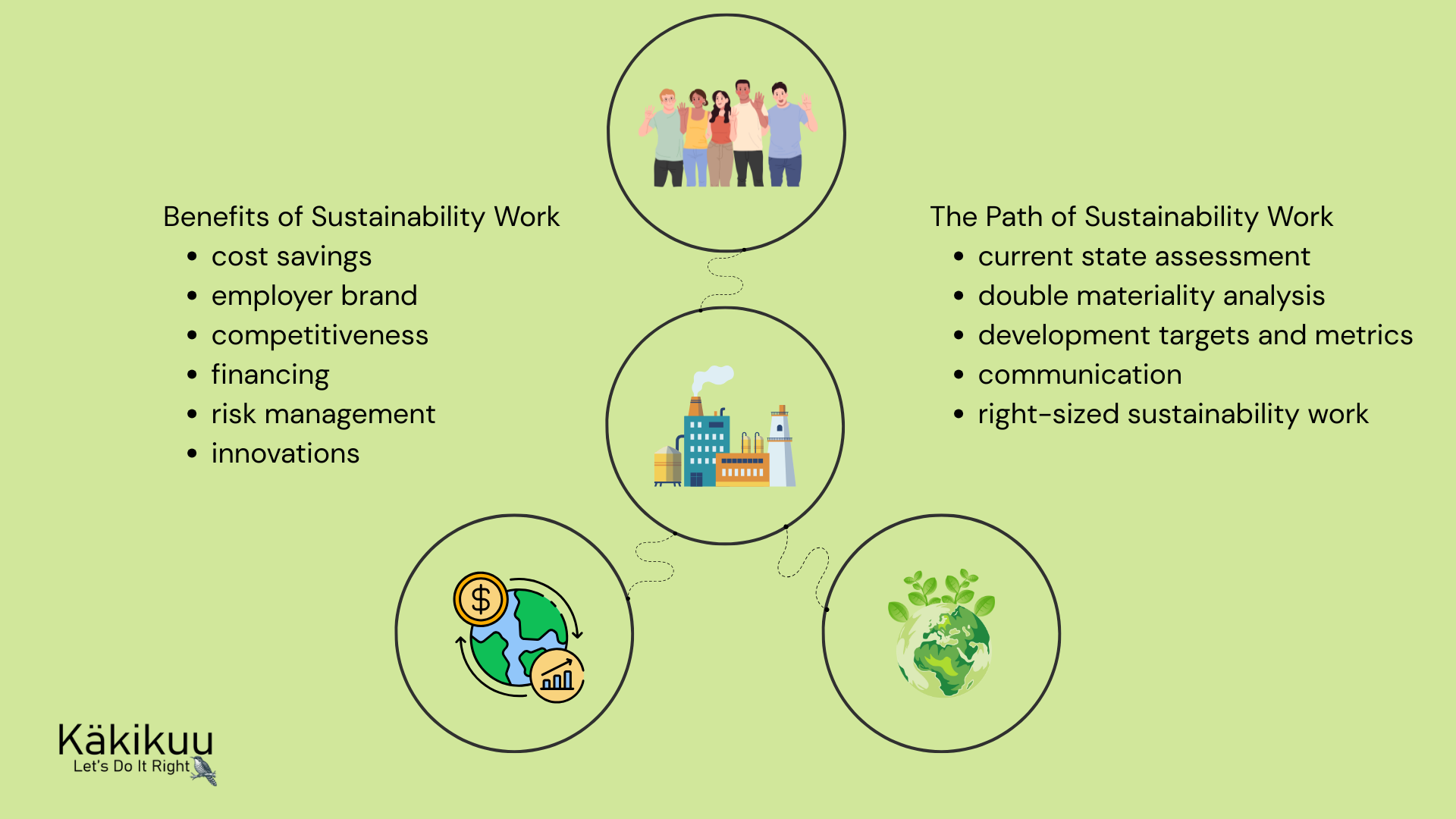Double materiality analysis is often associated with large companies and the reporting required by the ESRS standards. In reality, its value for SMEs is just as significant — not because it must be done due to regulation, but because it gives even a small company a tool that helps direct limited resources precisely to the issues that create the greatest impact.
The operating environment of SMEs is changing rapidly: costs are rising, customer expectations are increasing, value chains are becoming more complex, and an increasing number of partners require transparency. In this environment, random or ad-hoc responsibility work is no longer sufficient; clear understanding is needed of what is truly material.
What does double materiality analysis mean for an SME?
Double materiality analysis examines two perspectives:
- Impact materiality (inside-out)
– How the company’s operations affect people and the environment, and how significant these impacts are. - Financial materiality (outside-in)
– Which sustainability matters affect the company’s finances, costs, cash flow, risks, or opportunities?
An SME does not need to assess the entire world, but only those parts of its operations where it has a real impact and that influence the company’s own future. This makes the analysis surprisingly light yet highly effective.
Why should an SME make use of double materiality analysis?
Double materiality analysis makes it possible to sharpen the company’s strategy. SMEs often struggle with limited time, personnel, and financial resources. The analysis helps identify which responsibility themes are worth focusing on, which risks should be taken seriously, and where potential competitive advantages lie. In practice, it enables the company to shift its focus from random actions toward long-term, consistent development.
Double materiality analysis helps build the company’s long-term sustainable competitiveness. An SME’s competitive advantage often arises from efficiency, customer trust, competence, and operational reliability. Double materiality analysis supports all of these, as the actions identified through it reduce waste and costs, improve risk management, strengthen partner trust, and guide the company to develop the right operational practices.
Double materiality analysis builds credibility and transparency, as more and more customers ask SMEs for information about their responsibility work. When a company can explain which responsibility themes are material to it and why, it creates a level of credibility that cannot be bought.
Perhaps the most important benefit for SMEs is that double materiality analysis directs resources to the right things.
Perhaps the most important benefit for SMEs is that double materiality analysis directs resources to the right things. Through the analysis, the company evaluates which responsibility actions generate the greatest benefits, which risks may become the most costly if not taken seriously, and what can be left undone at this stage. In practice, this means less waste and better productivity.
What does an SME need to get started?
Starting the analysis is simple: it only requires a moment to pause and a clear view of the company’s current state, value chain, and stakeholder expectations. When the company understands where it has an impact and which sustainability matters affect its finances, it can identify the material themes and direct resources to the right issues. Getting started is therefore primarily about creating clarity, rather than engaging in heavy processes.
- Mapping the current state: where are we now, and what is our operating environment?
- Identifying and consulting stakeholders: whose expectations are material to us?
- Identifying material themes: which sustainability issues become the most important?
- Assessing impacts and risks: which impacts and risks may be significant?
- Linking the results to targets, metrics, and strategy: how do these guide our actions?
The process is simple, and the strategic benefit it produces is substantial.
A double materiality analysis is, above all, a tool for developing and managing business operations for an SME.
The analysis is not a document created for reporting. It is a strategic map that helps the company direct its actions, identify and understand its risks and opportunities, build sustainable competitiveness, and secure the continuity of its operations in a changing world.
For an SME, this work is even more important than for a large company: a single wrong decision can be costly, but a well-targeted development action can change the entire direction of the business.



